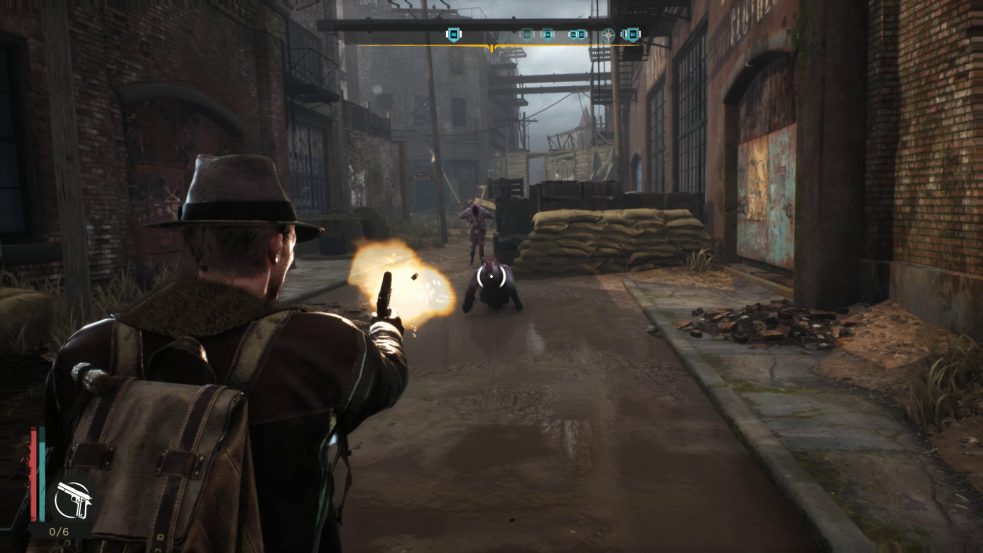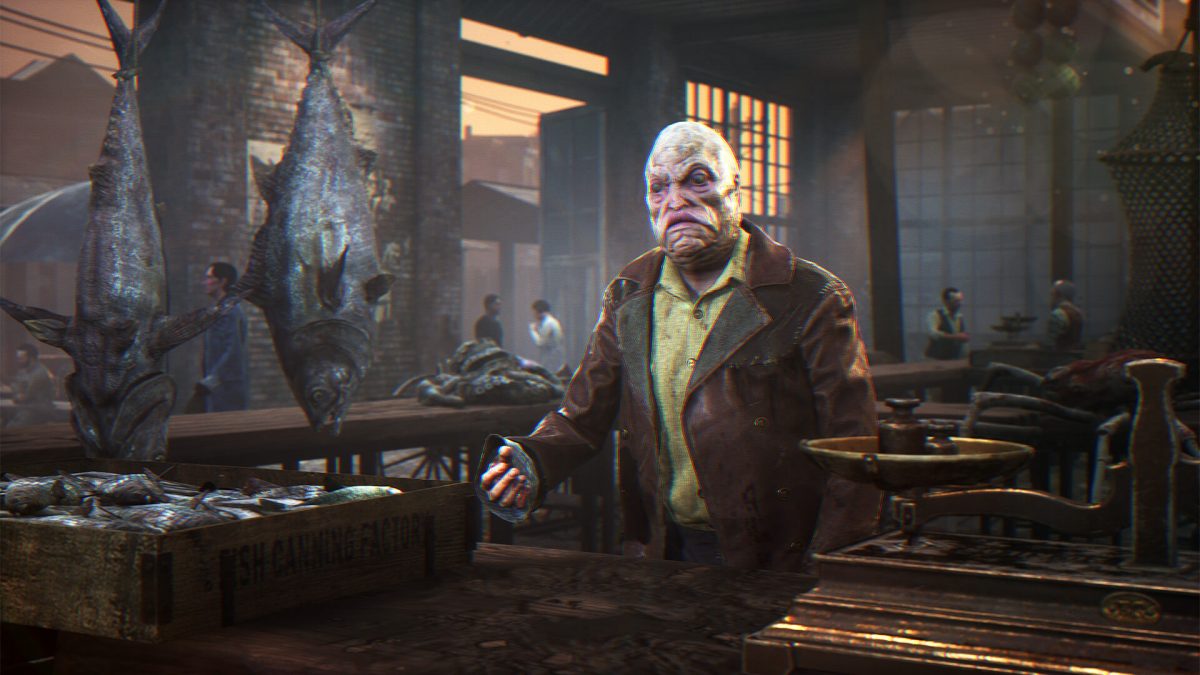Everyone loves a good detective story right? Combine that with supernatural elements and you’ve got a pretty potent combo. That’s exactly what The Sinking City managed to capture in this spooky Lovecraft inspired game. Developed by the studio Frogware, you already know the game will be up to par. This is because Frogware has a track record of detective games with their Sherlock Holmes video game series so they know what they’re doing.
To give the story a little bit of context, let me briefly catch you up to speed on Lovecraft. H.P Lovecraft is an author popularized by his creepy handiwork. Specifically the call of Cthulhu story.
Cthulhu is an ocean entity that emphasizes on the topic of insanity. Causing mass hysteria and visions, fueled by terror of the unknown. Besides the far reaches of space, the most unknown things for us involve the ocean itself. We still haven’t thoroughly explored 70% of our Earth’s estate underwater. That inspired this creation.
Now, The Sinking City picks that topic and capitalizes on it. The title of the game isn’t even a metaphor. The environment is quite literally a sinking city. You play as Charles Red, an Ex-Navy sailor from the great war who’s now turned into a private eye. After suffering from nightmares and hallucinations surrounding Lovecraftian culture, you are drawn to Oakmont. Oakmont is a fictional city in Massachusetts that’s been submerged by mysterious relentless rain. This makes the terrain mostly traveled on by foot or a boat.
You go there as a newcomer to the local land. The way you’re treated is reminiscent to let’s say the Fallout 4 far harbor DLC. You’re an untrustworthy outsider making a name for yourself. As such, you won’t be treated nicely until you do your good deed for the day.
Although Oakmont is within the USA, it’s got its own culture. This includes a made-up dialect, the bartering system instead of currencies and its own family divisions. The main two families you need to worry about are the Innsmouths and the Throgmortons. This is where the supernatural first starts to seep in.

I did enjoy the faction rivalry of the two families. It set a dynamic for a lot of the cases you solved. Weighing in more and more on who you trusted. The influential, local, and fact-driven Throgmortons. A group of missing evolution type Ape people that believe everything has a logical explanation. You talk to Robert early on in the game which quickly sets the dynamic of how his family is.
The second faction is the Innsmouths. These group of fish people is refugees that migrated to Oakmont during the great flood. They share problems with the general population of refugees around the world. Scorned, ridiculed and bullied for taking up local employment and living spaces. As the low-class oppressed minority, the Innsmouth’s also tend to contribute to the crimes you’ll be seeing during your stay.
The environment is one of my favorite things about the game. The perpetual rainstorm over Oakmont sets a great consistent tone for the rest of the game. The music is nice and chilly, simultaneously weighing your shoulders with a feeling of dread. The Sinking City in its environment encapsulates the feeling of “fear of the unknown”.
The map was mostly procedurally generated with landmarks tossed here and there so expect a bit of randomness. You’ll also be using the map a lot since the game doesn’t give you objective markers or waypoints. Better get to analyzing those landmarks.
The gameplay is focused on detective work like most of other Frogwares’ titles. You talk to suspects, witnesses, and associates. After that, you visit the crime scene. You investigate the scene to find and piece together clues. You then mentally simulate through visions what happened at the crime scene. After that, it’s just a matter of tracking down the cause/suspect using the clues. Every case ending is determined by what order you arrange the clues in. For example, if you piece together hysteria with murder, you’re essentially saying you know who the killer is but don’t blame them due to insanity. This pressures player into really diving deep to find every single clue in the crime scene. You don’t want to condemn an innocent man for something he didn’t do just because you missed a hint. I’ve made that mistake in the Witcher enough times.
I do wish they didn’t do the overused detective gaming trope of “detective vision”. This makes sense in games like Batman and the Witcher where there are several aspects of the game besides investigation. But in a game primarily about case solving, I sort of wish the developers allowed us to spot clues and markings. Still, the ability at least fit in with the lore of the game.

Your primary tools are a journal and a map. The journal besides tracking your progress is also used to piece together cases. The arrangement in your journal will also determine Reed’s opinion about the situation itself. I enjoyed the system of putting together clues and finding out where to go on your own. While waypoints are a good feature, sometimes they feel like handholding. It’s better to let players find their own way, especially considering that they’re a detective.
This is where my gripes come in, however. The system I explained above is pretty fun. But here’s the thing, that’s the entire game. After solving the first case with Robert’s missing son, you know what you’ll be doing the whole time. Go to the crime scene, find the clues, recreate the incident and track down the culprit. If you’re fine with that redundancy, I completely understand. I’m on my 9th playthrough of Sekiro Shadows Die Twice.
In comparison to similar genre games, like L.A Noire, Sinking City lacks a bit of diversity in its cases. Of course, the game follows the main plot but everything stays a bit too closely attached to it. We don’t really jump around much, even with the sidequests. Plus it gets kind of annoying when every case just eventually points to mass hysteria and the flood. It’s hard to act surprised after the 7th time.
I also sort of wish the game was in first-person. I’m not saying this as an FPS fan at all. I’m saying it because I really love the Sinking City environment and ambience. Not having Reed obstructing the view all the time would be great. Plus we could spot clues better using first-person.
Regarding being stiff, I was talking about the animations mostly. They feel very rigid and unnatural. Especially when running around or opening anything. I won’t talk about the combat much since it was a very tiny feature of the game. Let’s just say I’m glad we weren’t in combat often since it was terrible.
One thing I really liked about The Sinking City is its sound design. The creaking boards, constant rainstorm and voice acting were tremendous. The voice acting was so good in some places but was broken by the non-immersive visuals of the character speaking. The game had a hard time expressing visual emotions, but the voice work did wonders. One thing I disliked and found immersion breaking was how everybody talked in a low and normal pitch. Despite there being a rainstorm going on 24/7.
Other than that, solid experience. I’d definitely call it the best Lovecraft game since there are so many of those out there. This one really hit the nail in the head with spooky vibes and fun noir detective work. A bit of slack in the animation department and non-detective aspects like gunplay, The game is still a good pick-up though.
